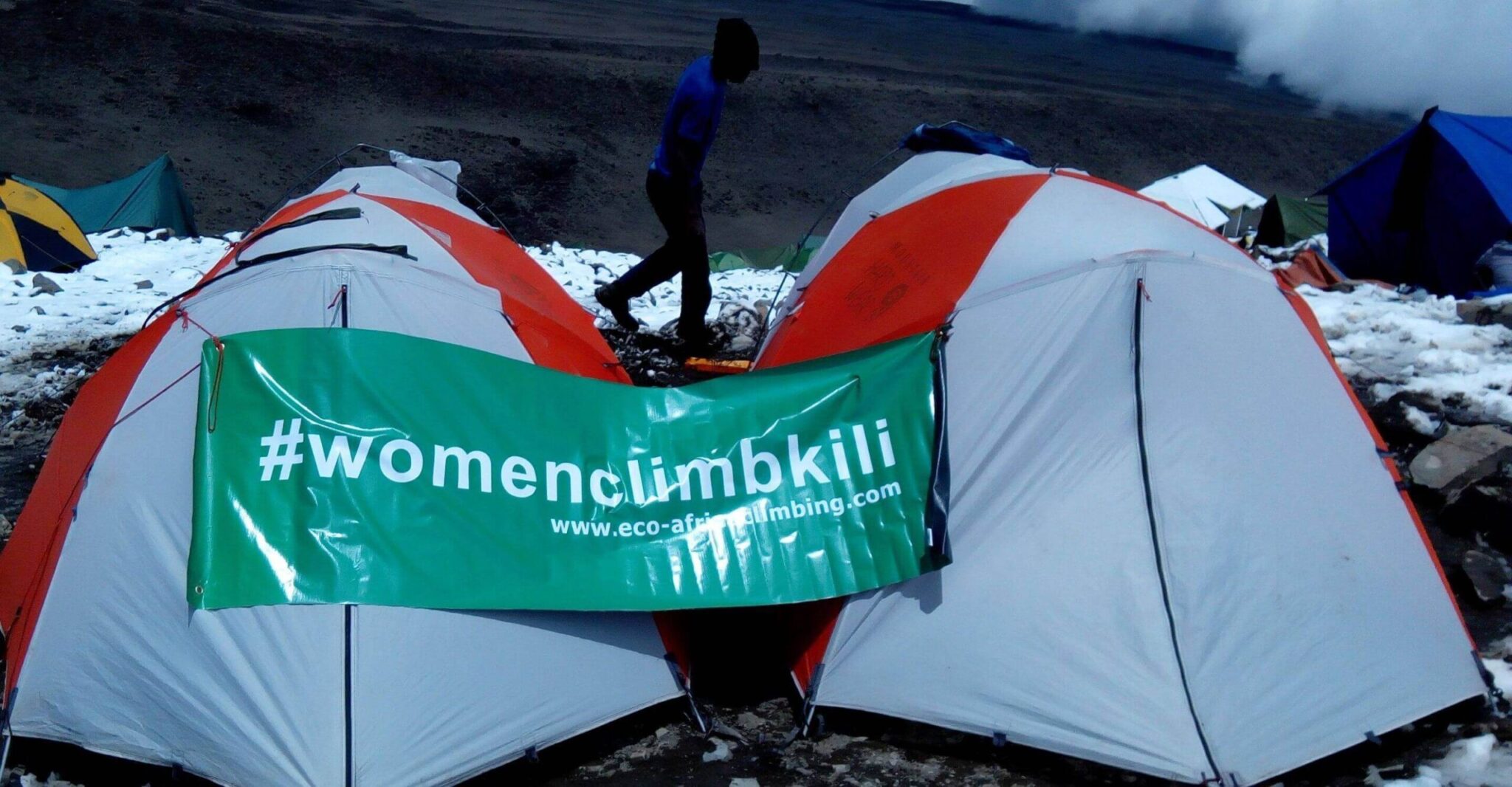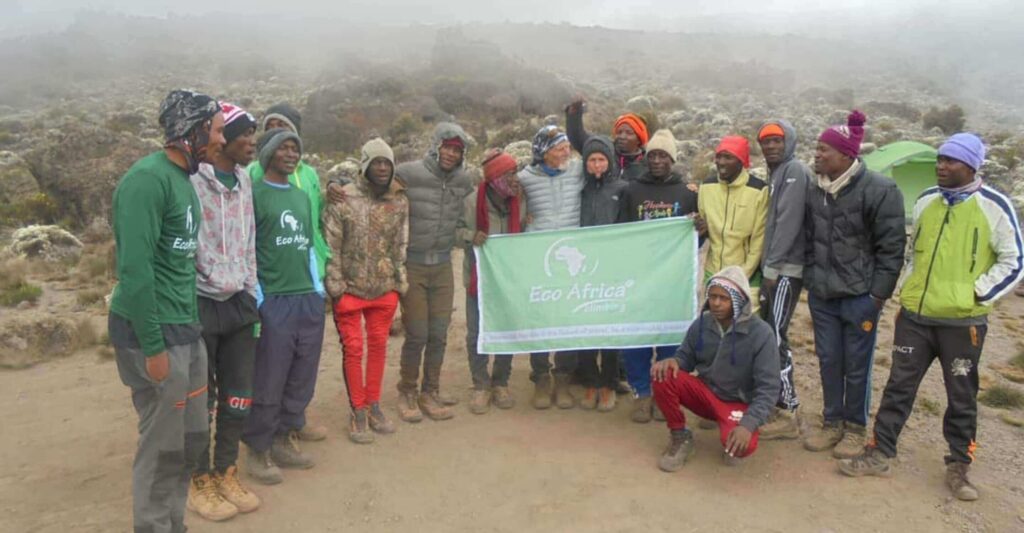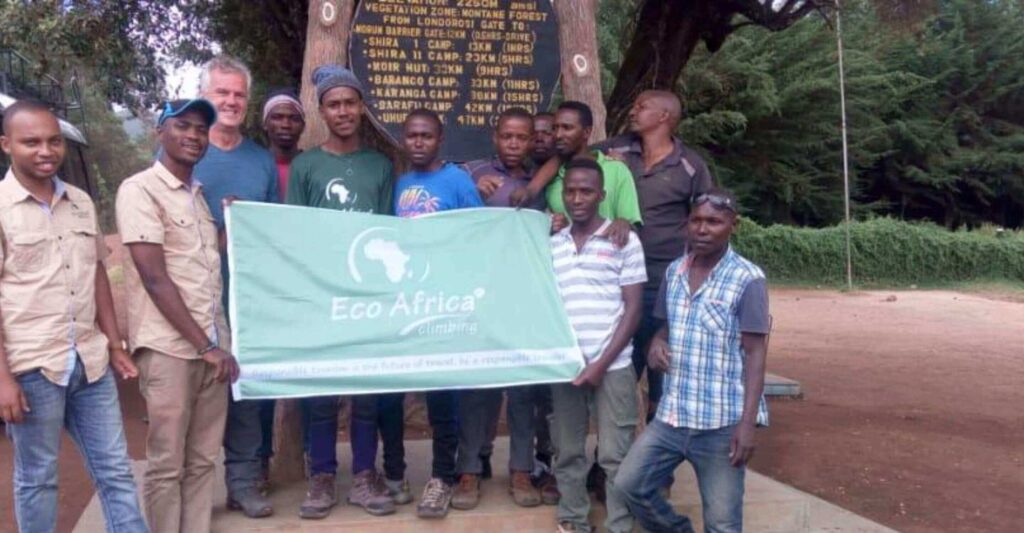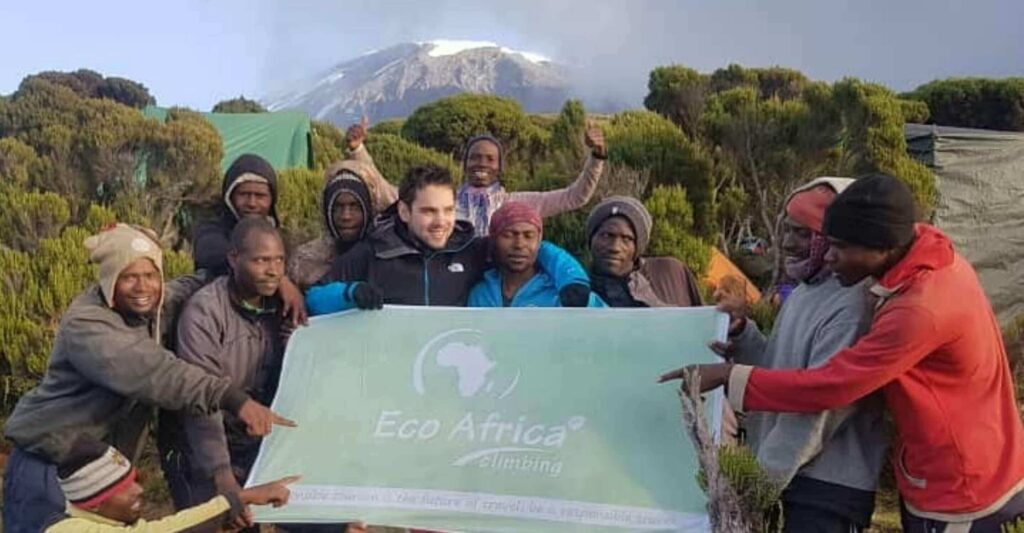SLEEPING ON KILIMANJARO

Where do you sleeping in Kilimanjaro?
You will be sleeping inside the tent ot hut as this depends on the Kilimanjaro route you will choose. Kilimanjaro Mountain has seven routes. You will sleep inside the Hut (Dormitory style) only on the Marangu route, and on the rest of the routes, you will sleep inside the tent.
The sleeping arrangements in these huts at the Marangu route are usually dormitory-style, with four to twenty beds per room. You will also see people camping on this route, but they are climbers who took the Rongai Route to ascend and are now descending on Marangu.
Therefore, there will be no privacy on the Marangu route as you will share the hut with other climbers who climb that day.
The route like Machame, Lemosho, Northern circuit, Shira, Rongai, and Umbwe has the Campsite that allows you to set your tent for sleeping.
Camping on the mountain is part of the adventure, and after a long day on the trail, your tent will become your private place to rest and recover.
On these camping routes, there is always privacy during your sleep as you will sleep in your tent unless you share it with someone in your group.
If you climb with your group, you can opt for Single supplements, whereby you will be offered your tent, and you will never share it with anyone during the entire climb.
What Tent do we use on Mountain Kilimanjaro?
Our Climbers will sleep in four-season Mountain tents during the trek.
Our Mountain Hardware tents are warm, waterproof, and roomy – perfectly suited for your Kilimanjaro adventure. We understand that some climbers are anxious about camping for so many days, so we aim to have them be as dry, warm, and comfortable as possible.
Mountain Hardwear Trango 3 tents are built for the most challenging alpine conditions.
Trango 3 tents are standard for refined basecamp shelters on mountaineering expeditions worldwide. Each three-person sized tent will comfortably house two climbers and their gear. The interior floor space is 48 square feet, with a large vestibule, dual doors, and internal mesh pockets. The Trango 3 is an entirely waterproof tent with fully taped seams and welded corners.
The Trango 3 tent is designed specifically for mountain conditions. Built to accommodate three people, we put only two people in a tent on our climb, leaving enough room for your duffel bag containing all your gear.
A vestibule at the front provides a sheltered spot for you to stow muddy boots and gaiters.
These tents are manufactured to withstand high winds, heavy rain, and snow cover, making them ideal for the environment on Kilimanjaro.
When you arrive at camp, our Mountain Crew team will be already set up your tent for you, and your gear will be safely inside.
The campsites are flat, not subject to any water accumulation, and our team will make sure there are no stray rocks underneath.
Two climbers will share a single tent during the Kilimanjaro climb, especially the group climb. Those climbers in the group who need privacy have an option to book for Single Supplement during the climb. You will need to pay $250 per person per trip during your Kilimanjaro climb for the single supplement. A single tent will provide you during the entire climb and a single room during your two nights spent in Moshi before and after the climb.
Which Sleeping Mattress do we use on Kilimanjaro?
We will provide you with a foam mattress; a 1.5-inch foam sleeping mattress is provided to all climbers. These locally sourced sleeping pads are better than any commercially available sleeping mattress, and they are thick, warm, and comfortable, even for those not used to camping. The pad is placed inside a washable cover for cleanliness.
If you have a particular sleeping mattress you prefer, you are welcome to bring it with you.
Which Sleeping Bag do we recommend on Kilimanjaro?
Unfortunately, we don’t provide a Sleeping bag to our climber during the climb, and the climber will have to come with their sleeping bag and sleeping liner. The climber can rent the sleeping bag from us at $50 per person per trip, and the sleeping liner is for $15 per person per trip; for more details, check our Kilimanjaro Rental Gear Price List. We have a warm Mountain Hardware Lamina Sleeping bag, and winter synthetic sleeping bags are constructed to enhance the loft and eliminate cold spots. The durable nylon shell repels water while the polyester lining wicks away moisture, keeping weary climbers dry and warm.
The Lamina is long enough to fit someone 6′ 6″ tall, weighs 5 lbs 6 oz., and is temperature rated to -30F (-34C), more than sufficient even on Kilimanjaro’s chilly nights.
Pillow during your Kilimanjaro Climb
From our experience, Most people like a pillow for when they sleep, and Kilimanjaro is not the time to do without an essential night-time comfort. You could bring along a pillow, though it shouldn’t be too big, as it needs to fit in your duffel bag.
We provide our climbers with pillows upon request. So before arrival to Kilimanjaro, you should request for pillow during your Kilimanjaro Climb so that we can include the pillow during your climb.
Some climbers bring a pillowcase and put their down jackets inside it each night for a beautifully comfortable sleep.
Tips for a Warm & Comfortable Night in Your Tent
Between us, we’ve spent hundreds of hours asleep on Kilimanjaro, and here are our top tips to keep comfortable:
Sleep System on Kilimanjaro
As soon as you arrive at camp, get your sleeping bag out of its compression sack and lay it on your sleeping mat.
This allows the insulation or “loft” to fluff up, as it’s the air between the synthetic fibers or down feathers that traps warmth.
Keep your sleeping bag away from the sides of the tent, as condensation may build up and cause dampness, compromising the insulation.
Use a fleece sleeping bag liner for added warmth.
Sleeping Clothes on Kilimanjaro
Have a set of clothes that you use for sleeping. A warm base layer (top and bottom) and a clean pair of socks can make all the difference to your comfort. You’ll most likely be wearing more than one layer at the higher camps. Sleep in a warm hat, as much of your body heat is lost through your head.
Other ways to stay warm and comfortable on Kilimanjaro
- Do not wear wet clothes in your sleeping bag. Anything that causes dampness and moisture will compromise the insulation properties of your sleeping bag.
- Before retiring to your tent, fill your water bottle with hot water (make sure the lid is well-secured) and use it as a foot warmer or body warmer in your sleeping bag.
- Make sure you’ve eaten enough. Appetites can decrease at altitude, but your body needs the calories to generate heat and recover from the day’s exertions.
- Put the clothes you’re wearing the next day in your sleeping bag, and this will keep them warm for when you dress in the frosty morning air.
- If you are a light sleeper, bring earplugs. The wind can be noisy, especially at Barafu camp, and noise from other climbers (or your tent mate’s snoring) can keep you awake.
- Visit the toilet before bedtime. There’s nothing worse than waking up warm and cozy in your sleeping bag and needing a call of nature in the night!
- If you know you have problems sleeping, work on fixing these at home, don’t wait until you’re on the side of the mountain! Avoid sleeping pills as they can negatively affect your ability to acclimatize.
Camping is all part of the mountain Kilimanjaro experience, and there’s no reason for it to be uncomfortable.
If you hate sleeping in a tent, the Marangu route provides dorm-style accommodation in huts.
Please read our complete guide to Packing for Kilimanjaro.
Our Top Recommended Ethical Kilimanjaro Climbs
Ethical Kilimanjaro via Northern Circuit Route 9 Days
The Northern Circuit route is one of the best routes on Kilimanjaro.The route approaches Mount Kilimanjaro from the west….
From USD $3250
Ethical Kilimanjaro via Lemosho Route 8 Days
The Lemosho route is one of the newer routes on the mountain and a superb choice for your climb, It is our preferred route…
From USD $2950
Ethical Kilimanjaro via Machame Route 7 Days
Machame (“Whiskey”) Route is also known as the “Whiskey” route, the Machame route is now the most popular route on the …
From USD $2650


